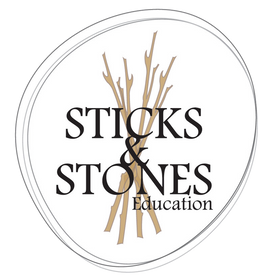
The Planning Cycle and the EYLF 2.0
The planning cycle and the new EYLF 2.0 describes the process educators follow in planning, documenting, responding to and supporting children’s learning.
Educators make many decisions about curriculum planning based on their professional knowledge, their knowledge of children and local contexts, and their understanding of the Vision, Principles, Practices and Learning Outcomes of the Framework.
The steps, sequences and components of the planning cycle that are identified and explained in Diagram 2 in the new EYLF 2.0 and can occur spontaneously, ‘in the moment’, throughout the day or over a period.
Educators use these 5 components to inform their thinking about children’s experiences and improvement of practice to develop and implement a curriculum that is inclusive of all children.
It is important to note that documentation occurs at every stage of the planning cycle.

The Planning Cycle and the EYLF 2.0 Explained
OBSERVE / Listen / Collect information of the EYLF Planning Cycle
Educators use multiple sources of information to gather and document different aspects of children’s learning, development and wellbeing. This can be undertaken across the whole curriculum and throughout the day, including during routines, planned and unplanned experiences and interactions with peers, family members and other adults.
Educators observe, listen to, engage with, and are attuned to childrens’ dispositions, curiosity, discoveries, theories, perspectives, knowledge skills, involvement in learning and contributions to their own learning and the learning of others.
Educators acknowledge, document and describe children’s capabilities and unique ways of belonging, being and becoming ensuring children’s and families’ voices are sought, heard and included.
ASSESS / Analyse / Interpret learning of the EYLF Planning Cycle
Educators draw on a range of sources of information including their professional knowledge and early childhood theories to clearly identify children’s strengths and capacities and consider these in relation to the Learning Outcomes and/or other assessment criteria. This includes children’s awareness and understanding of their own learning, including the embodied nature of very young children’s demonstration of their own learning goals.
Educators draw on their knowledge and the expertise of the children, families, communities and other professionals they work with, to interpret their collection of information.
Educators assess children’s learning and engagement in a variety of ways, in the moment and over time, and in diverse context for and with children.
PLAN / Design
Educators’ planning is inspired and informed by their thoughtful analysis of the information collected and their documentation. Using this analysis, they plan how to consolidate, enrich and extend children’s learning and thinking.
Educators are intentional in their choice of appropriate learning and teaching strategies, content, resources, design of the use of time and indoor and outdoor learning environments.
Educators ensure relational and place-based pedagogies are at the core of planning meaningful learning experiences for children and groups of children. Plans can be jointly constructed in collaboration with children and in partnership with families.
IMPLEMENT / Enact of the Planning Cycle
Implementation is where the plans turn into action.
Educators enact and review their planned learning experiences for individuals and groups of children throughout the day. They extend children’s learning during structured and spontaneous adult-led experiences, child-led play, mealtimes and personal care routines, and indoor and outdoor environments.
Educators’ intentionality shines within the aspect of the planning cycle, where their learning and teaching strategies, engagement and thinking amplify children’s learning
EVALUATE / Critically reflect
Educators use their assessment of, as and for children’s learning to evaluate the implementation of plans. Educators consider how meaningful and effective the plans have been for children’s learning development and wellbeing, giving considerations to children’s cultural and linguistic identities and diverse capabilities.
Evaluation is a time of critical reflection to consider ‘What worked well and why?’, ‘What will I do differently next time?’ and ‘How can I further extend children’s learning?’ Critical reflection is a powerful tool for educators to consider the learning possibilities moving forward.
Educators’ evaluation also identify areas for information sharing with colleagues and professional learning that will improve curriculum processes and practices.
Further Reading + References
- Reflection Questions for National Quality Standard: Quality Area 1
- CELA: Where to start when you're new to planning and programming
- BELONGING, BEING & BECOMING: The Early Years Learning Framework for Australia – V2.0, 2022
- My Time, Our Place: Framework for School Age Care in Australia V2.0 (MTOP)
by Gaby Flavin of the Educator's Notebook: Early Years Edition March 02, 2023
















